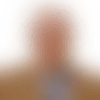The NFL's supplemental draft will take place July 16 at 1 p.m. ET.
The supplemental draft began in 1977 as a way to accommodate players who weren't eligible for the upcoming college football season. That year, Notre Dame RB Al Hunter flunked out of school after the NFL Draft but before his senior season in college. Because Hunter wouldn't have been eligible to transfer, the supplemental draft was created. The Seattle Seahawks landed Hunter with a fourth-round bid.
Here's how the supplemental draft works today. The league conducts a private selection meeting -- it's nothing like the regular NFL Draft. It takes place over the phone, and each round takes about 10 minutes, as teams either pick one of the players in the supplemental draft pool or just pass. However, any team that makes a pick in the supplemental draft will forfeit the corresponding selection in the following year's regular draft. For example, if a team were to select a player with a fourth-round pick, it would forfeit its fourth-round pick in the 2010 draft.
Any player that is not drafted in the supplemental draft becomes an undrafted free agent and is then able to sign with any team. Those that do get drafted will join their team like any other draft pick -- except they will be behind, because they will have missed all the offseason workouts.
Perhaps the most successful recent supplemental draft pick was the Ravens' Jared Gaither. After playing only six games and starting only two as he made up for the lost offseason time in his rookie year (2007), he became the team's full-time starter at left tackle last season.
Of the players in this year's supplememtal draft, there are three that have a better chance than most of being taken. Here is what these three players have to offer:
1. Jeremy Jarmon, DE, Kentucky
Jarmon is the most likely player to be chosen in the supplemental draft. The defensive end was ruled ineligible by the NCAA in late May for testing positive for a banned substance. The punishment would have cost Jarmon his senior season and effectively ended his college football career, so he decided to enter the supplemental draft. Jarmon had four sacks for the Wildcats last season after recording nine in 2007. Jarmon held a Pro Day on July 9 and ran indoors on FieldTurf. He posted a 4.8-second 40-yard dash, had a 31-inch vertical jump, a 9-foot, 9-inch broad jump, a 4.28 short shuttle, a 7.38 three-cone drill and did 19 reps at 225 pounds on the bench press. He looked very good in positional drills.
2. McKinner Dixon, DE, Texas Tech
The former Red Raiders standout was suspended indefinitely by Texas Tech coach Mike Leach in April for not keeping up his grades. He later decided to leave the program and make himself eligible for the supplemental draft. Dixon had eight sacks and 10 tackles for loss last season and was one of the nation's better pass rushers. He did struggle against Oklahoma late in the year, however. Dixon began his career at Texas Tech before poor grades forced him to transfer to community college. After improving his academic standing, he returned to Texas Tech last year.
3. Deon Murphy, WR, Kansas State
Murphy was a junior college transfer to Kansas State in 2007. He teamed with current Packers receiver Jordy Nelson to form one of the Big 12's most potent wideout duos in 2007 and was named the Big 12's offensive newcomer of the year. He also was one of the nation's best punt returners in 2007 and entered 2008 with very high expectations. He struggled some to put up the same numbers as a receiver and returner last year. He left Kansas State in the spring and entered the supplemental draft. The Chicago Bears' Devin Hester has shown the importance of kick returners in the NFL, and Murphy's special-teams potential could get him drafted late.




